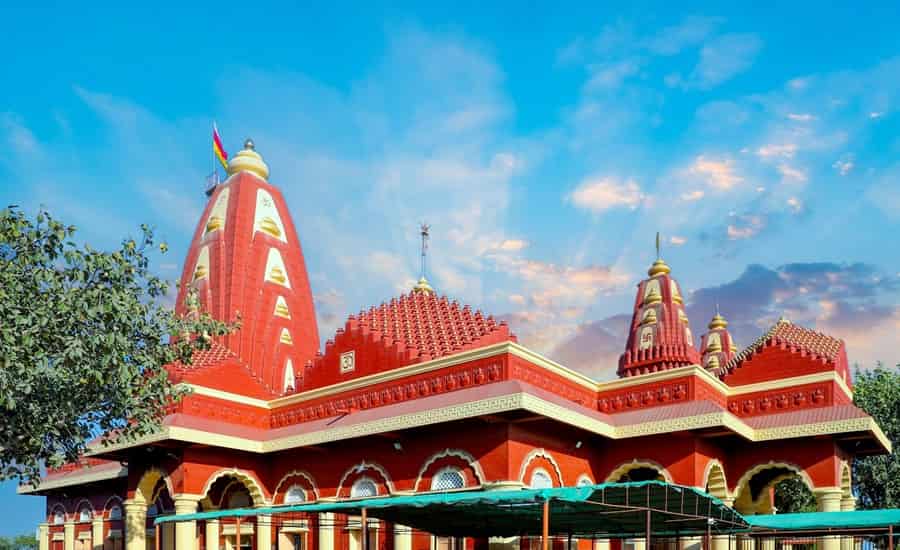Nestled in the coastal town of Dwarka in the western state of Gujarat, India, the Nageshwar Jyotirlinga Temple stands as a testament to spiritual devotion and architectural grandeur. Dedicated to Lord Shiva, this sacred shrine attracts pilgrims and tourists alike. One key factor that significantly influences the experience of a visit to Nageshwar Temple is the timing of your trip. In this comprehensive guide, we will delve into the nuances of the best time to visit Nageshwar Temple, considering weather conditions, seasons, and other essential factors.
- The best time to visit Nageshwar Temple is during the winter months (November to February) for comfortable weather and an enjoyable spiritual experience.
Geography
Before we explore the ideal time to visit the Nageshwar Temple, it’s crucial to comprehend the geography of the region. Dwarka, where the temple is situated, experiences a coastal climate owing to its proximity to the Arabian Sea. The town enjoys three primary seasons: summer, monsoon, and winter.
Summer (March to June)
The summer months in Dwarka can be quite challenging due to the intense heat. Daytime temperatures often soar, making outdoor activities uncomfortable. The months of April and May are particularly scorching, with temperatures crossing 40°C (104°F). Pilgrims and tourists are advised to avoid visiting Nageshwar Temple during these months unless they can tolerate extreme heat.
However, for those who brave the heat, summer does have its advantages. The temple is less crowded during this period, allowing for a more peaceful and contemplative experience. If you choose to visit in summer, it’s advisable to plan your temple visits early in the morning or late in the evening to escape the peak heat.
Monsoon (July to September)
Monsoon brings relief to Dwarka with refreshing rains that cool down the temperature. The landscape turns lush green, creating a picturesque backdrop for the temple. While the monsoon season can be a mesmerizing time to visit, it comes with its own set of challenges.
Heavy rainfall is common during monsoon, leading to waterlogging and slippery pathways. Travelers are advised to be cautious and wear appropriate footwear. Additionally, some outdoor activities may be restricted during heavy rainfall. Despite these challenges, the monsoon season adds a unique charm to the temple visit, and the devotees often find solace in the rhythmic sound of raindrops against the temple architecture.
Winter (October to February)
Winter is considered the best time to visit Nageshwar Temple. The weather is mild and pleasant, with daytime temperatures ranging from 10°C to 25°C (50°F to 77°F). The cool breeze from the Arabian Sea enhances the overall experience, making it comfortable for exploring the temple and its surroundings.
The months of November to February witness a significant influx of pilgrims and tourists due to the favorable weather conditions. The winter months also coincide with various festivals and celebrations, adding a festive atmosphere to the temple premises. Devotees often prefer this time to perform rituals and seek the blessings of Lord Shiva.
Planning Your Visit:
Now that we have explored the different seasons, it’s essential to consider some additional factors when planning your visit to Nageshwar Temple:
- Festivals: Check the festival calendar, as special celebrations and events may influence the temple’s atmosphere and crowd density. The Maha Shivaratri festival, in particular, attracts a large number of devotees.
- Accommodation: Ensure that you have accommodation reservations, especially during peak seasons, to avoid any last-minute hassles. Dwarka offers a range of hotels and guesthouses catering to various budgets.
- Local Events: Stay informed about any local events or gatherings that may impact transportation and accessibility to the temple.
Conclusion
In conclusion, the best time to visit Nageshwar Temple depends on your preferences and tolerance for weather conditions. While winter emerges as the most favorable season, each season has its own unique charm, providing a distinctive experience for visitors. Whether you seek the tranquility of a less crowded summer visit, the enchanting ambiance of monsoon rains, or the festive spirit of winter celebrations, Nageshwar Temple welcomes you with open arms throughout the year. Plan your pilgrimage wisely, and may your journey to this sacred abode be filled with spiritual fulfillment and divine blessings.
Also Read:





 Call
Call WhatsApp
WhatsApp Enquiry
Enquiry